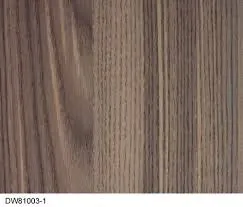- Home
- Exploring the Techniques and Innovations in Duplex Board Production by Leading Manufacturers
Lug . 30, 2024 04:45 Back to list
Exploring the Techniques and Innovations in Duplex Board Production by Leading Manufacturers
The Duplex Board Manufacturing Process An Overview of Leading Manufacturers
Duplex board, known for its versatility and sturdiness, plays a crucial role in various applications, ranging from packaging to printing. The manufacturing process of duplex board involves several intricate stages, ensuring that the final product meets the required quality standards. This article provides an overview of the duplex board manufacturing process and highlights key players in the industry.
Understanding Duplex Board
Duplex board is a type of paperboard made from recycled paper, which is typically used for packaging purposes such as cartons, boxes, and wrappers. It is characterized by its smooth surface, brightness, and excellent printability. The board consists of two layers—often referred to as the top layer and the base layer—allowing for a balance of durability and lightweight properties. It’s an eco-friendly option that aligns with sustainable practices, making it increasingly popular among manufacturers and consumers.
The Manufacturing Process
1. Raw Material Preparation The process begins with the procurement and preparation of raw materials, primarily recycled fibers from waste paper. Manufacturers often focus on acquiring high-quality waste paper to ensure the clean production of duplex board.
2. Pulping The prepared raw materials undergo a pulping process. In this stage, the waste paper is mixed with water and chemicals to create a slurry. This mixture is then mechanically refined to separate the fibers and remove contaminants.
3. Sheet Formation The refined pulp is then spread onto a moving screen to form sheets. The water is drained away, and the remaining fibers bond together, creating a wet sheet of duplex board.
4. Pressing The wet sheets are pressed to remove excess water. This step is crucial as it helps achieve the desired thickness and density of the board. The pressing process also initiates the bonding of the fibers.
duplex board manufacturing process manufacturers

5. Drying Once pressed, the sheets are dried using heated rollers. This stage reduces the moisture content to a suitable level, ensuring the board is not only stable but also possesses ideal printing characteristics.
6. Coating After drying, a coating is often applied to the top layer of the duplex board. This coating enhances the board's surface for better print quality and adds a protective layer against physical and environmental damage.
7. Finishing Finally, the duplex board undergoes finishing processes such as cutting, trimming, and packaging. This ensures that the product meets specific dimensions and is ready for distribution to manufacturers and consumers.
Leading Manufacturers
The global duplex board manufacturing landscape is marked by several key players, each contributing to advancements in production technology and sustainable practices. Companies like Stora Enso, Smurfit Kappa, and International Paper have established themselves as leaders by investing in innovative processes and eco-friendly materials. These manufacturers focus on enhancing product quality while reducing the environmental impact of their operations.
Moreover, local manufacturers in regions like Asia and Europe are also making significant strides in the duplex board market. Many of these manufacturers prioritize sustainability by utilizing renewable energy sources and optimizing their production processes to minimize waste.
Conclusion
The duplex board manufacturing process is a sophisticated blend of technology, craftsmanship, and sustainability. As the demand for eco-friendly packaging solutions continues to grow, leading manufacturers are poised to innovate further, ensuring that duplex board remains a vital material in the packaging industry. By understanding the intricacies of this process, stakeholders can appreciate the quality and versatility that duplex board offers in today's market.
Latest news
-
High-Quality Duplex Board Food Packaging - Reliable Suppliers & Exporters
NewsJul.05,2025
-
Duplex Paper Rate Per Kg – Best Manufacturer & Supplier Prices Online
NewsJul.04,2025
-
High-Quality Duplex Kraft Paper Reliable Suppliers & Exporters Top Manufacturers
NewsJul.04,2025
-
Removable Contact Paper for Kitchen Cabinets - Durable, Easy to Install, Stylish Designs
NewsJun.24,2025
-
Cupboard Decoration with Paper - Stylish Designs, Custom Sizes & Bulk Supply
NewsJun.10,2025
-
Premium Contact Paper for Table Top - Durable, Easy to Apply, Stylish Surfaces
NewsJun.10,2025

